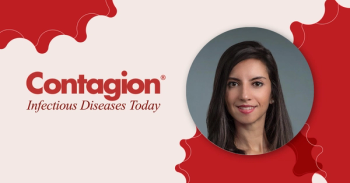
What Health Care Providers Need to Know About 2019-nCoV Now
The CDC, WHO, and other global entities are working together to understand and control this novel coronavirus and provide important guidelines for health care professionals. Here’s what you should know.
The new decade started off with a mysterious outbreak of pneumonia in Wuhan, the capital of Central China’s Hubei province. In just the matter of weeks, the respiratory illness evolved into a global health concern, with cases reported on 4 continents—Asia, North America, Australia and Europe—including several cases here in the United States. The virus has been identified as a novel
The US Centers for Disease Control and Prevention (CDC), the World Health Organization (WHO) and other global entities are working together to understand and control this novel coronavirus and provide important guidelines for health care professionals. Here’s what you should know.
Novel Coronavirus 2019-nCoV
Coronaviruses are a species of enveloped viruses that were first discovered in the 1960s. Coronaviruses are most commonly found in animals, including camels and bats, and rarely spread to humans. However, sometimes viruses jump species from animals to humans, which are known as zoonotic diseases, or infectious diseases that spread from animals to humans. Researchers still don’t fully understand why only certain coronaviruses are able to infect people.
The latest strain of human coronavirus, originating from Wuhan, has been named Coronavirus 2019-nCoV. The initial case of 2019-nCoV reported to the WHO on December 31, 2019 stemmed from a pneumonia outbreak in China, linked to a large market where raw seafood and live animals are commonly sold. The market was closed for cleaning and disinfection on January 1, 2020. Since then, there have been thousands of reported cases across the globe, with 80+ deaths in China. There have been 5 confirmed cases of the coronavirus in the United States in 4 states (Arizona, California, Illinois and Washington).
Guidelines for Health Care Facilities
The CDC is constantly monitoring developments of 2019-nCoV and has posted
Health care providers are urged to take proactive steps to prevent the spread of 2019-nCoV, including obtaining a travel history for patients presenting with fever and/or symptoms of lower respiratory illness (eg, cough, difficulty breathing). For patients under investigation, providers should:
- Ask patients to wear a surgical mask as soon as they are identified.
- Conduct their evaluation in a private room with the door closed, ideally an airborne infection isolation room, if available.
- Use standard precautions, contact precautions, and airborne precautions and use eye protection (eg, goggles or a face shield) for all personnel entering the room.
- Implement basic infection control measures including hand hygiene, respiratory hygiene/cough etiquette (eg, masking), and environmental disinfection.
An important part of the prevention plan is surface disinfection to help remove the virus from surfaces and prevent its spread in the facility and externally into the community. In the US, the outbreak situation has triggered the Environmental Protection Agency’s Emerging Pathogen Policy. This policy determines whether disinfectants that meet certain efficacy criteria can be considered effective against the 2019-nCoV. Contact your disinfection product manufacturer for the latest information on whether their products can be considered to be effective against 2019-nCoV.
In addition to the CDC guidelines, here are some other actions that healthcare providers can start to do:
- Dust off your old SARS plans and update them as indicated. However, this public health emergency is also a reminder that we should proactively revisit emergency management plans and periodically run practice drills.
- Implement travel screening for patients being evaluated for fever and/or symptoms of lower respiratory illness in key entry points of the facility (eg, ED, urgent care, admitting, etc.).
- Emphasize respiratory hygiene/cough etiquette (eg, do you have respiratory etiquette stations in facility entries and waiting areas?).
This is an evolving situation and there is still much to learn about 2019-nCoV, how it is transmitted, and its virulence and pathogenicity. The CDC and WHO will continue to monitor this situation and will provide the CDC will provide the most up-to-date information on its
Doe Kley, RN, MPH, is a Sr. Infection Preventionist at Clorox Healthcare.
Newsletter
Stay ahead of emerging infectious disease threats with expert insights and breaking research. Subscribe now to get updates delivered straight to your inbox.




















































































































































































































































































